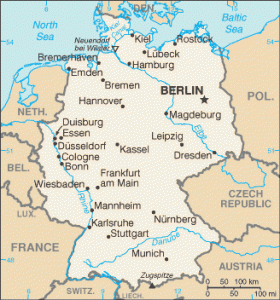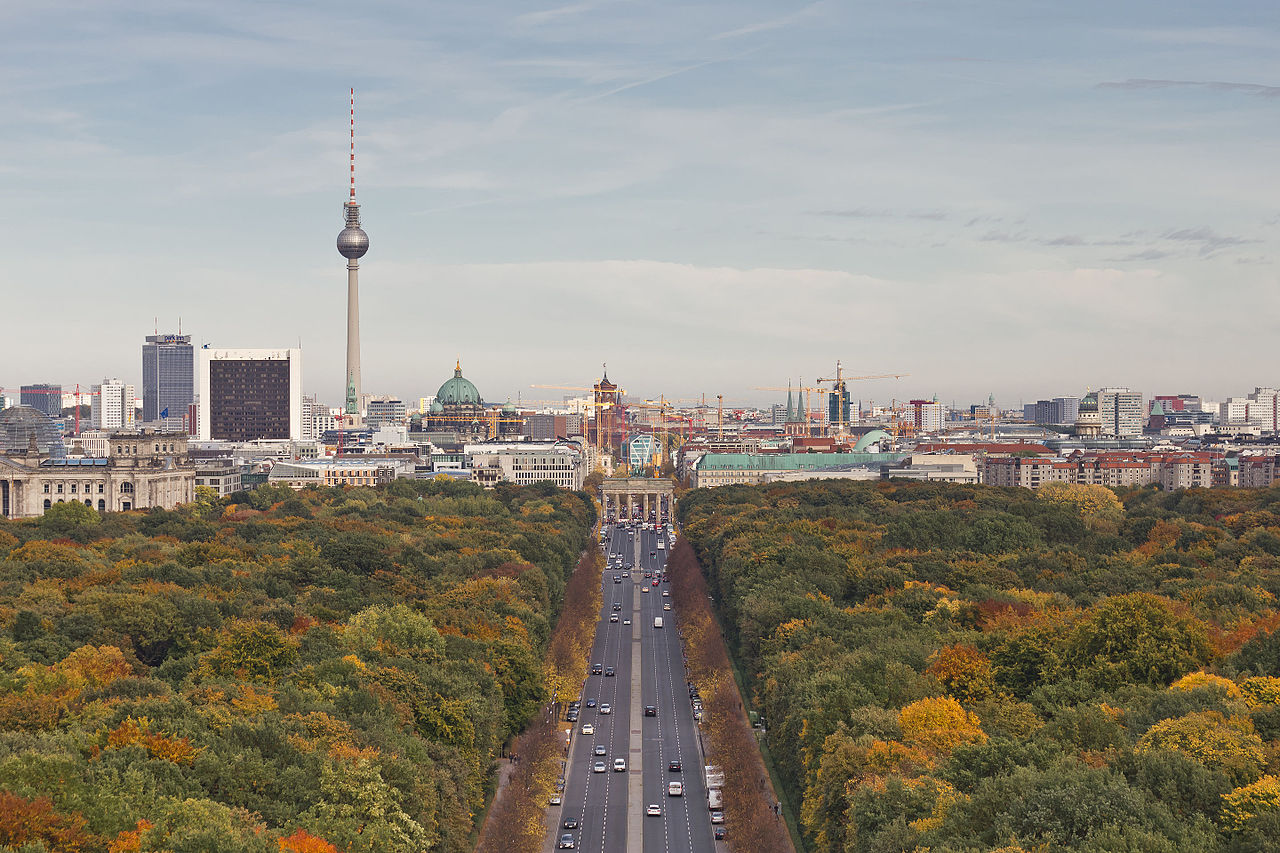Germany November 24, 2021 Alps , Baltic , Baltic Sea , Berlin , Brême , Bundesrepublik Deutschland , Central Europe , Cologne , Confédération germanique , Danube , Deutschland , Dresde , Dresden , Duisbourg , Dusseldorf , Elbe , Essen , Euro zone , Europe , European Union , fleuve Danube , Frankfurt , Germany , Hambourg , Hanovre , Länder , München , Munich , NATO , North Sea , Nuremberg , OECD , Rhine , Rhine River , Ruhr , Saint-Empire romain germanique , Saxe , Stuttgart Official name Federal Republic of Germany Name in local language Bundesrepublik Deutschland (de) Continent Europe Subcontinent European Union Population (ranking: 17e ) 83,129,285 inhabitants (2021) Population growth -0.01 % / year Area 357,386 km² Density 232.60 inhabitants / km² GDP (ranking: 4e )3,846.414 billions $USD (2020) GDP/capita (ranking ) 46,208 $USD (2020) GDP growth -4.60 % / year (2020) Life expectancy (ranking ) 81.00 years (2020) Birth rate 9.30 ‰ (2020) Fertility rate 1.53 children / woman (2020) Death rate (ranking ) 11.80 ‰ (2020) Infant mortality rate (ranking ) 3.00 ‰ (2019) Literacy rate 100.00 % (2021) Official languages German Currency Euro (€ EUR) HDI (ranking: 9e )0.947 / 1 (2019) EPI (ranking )78.37 (2018) Government Federal constitutional parliamentary republic Head of State President Frank-Walter Steinmeier ; Chancellor Olaf Scholz National Day 3 October (Reunification of 1990) ISO Codes DE, DEU Demonym German Tourists (ranking ) 38,881,000 people (2018)
The population is rising thanks to massive immigration Germany is a federal state of Central Europe, bordered by the North Sea, Denmark and the Baltic Sea to the north, Poland and the Czechia to the east, Austria and Switzerland to the south, and by the France , Luxembourg , Belgium and the Netherlands to the west. It occupies a strategic central position in the heart of Europe and the European Union. It is organized in “Länder”, or Federated States, numbering 16.
Berlin, Germany. Photo: Wikipedia Saxon Switzerland, Germany. Photo: Andreas Steinhoff, Wikipedia Urban areas (2018) Urban areas Population Rhine-Ruhr 10,642,890 inhabitants Berlin 4,469,439 inhabitants Frankfurt 3,794,360 inhabitants Hamburg 3,173,871 inhabitants Stuttgart 2,996,440 inhabitants Munich 2,879,107 inhabitants Mannheim 1,400,533 inhabitants Nuremberg 1,340,886 inhabitants Leipzig-Halle 1,178,658 inhabitants Hanover 1,157,624 inhabitants Dresden 1,143,197 inhabitants Karlsruhe 1,033,550 inhabitants Bremen 976,819 inhabitants Bielefeld 926,761 inhabitants Chemnitz-Zwickau 883,743 inhabitants Saarbrücken 763,815 inhabitants Augsburg 661,540 inhabitants Freiburg im Breisgau 658,419 inhabitants Aachen (Aix-la-Chapelle) 650,960 inhabitants Brunswick 588,778 inhabitants Munster 538,508 inhabitants Kiel 503,610 inhabitants Kassel 481,172 inhabitants Heidelberg 427,514 inhabitants Ulm 396,948 inhabitants
Administrative divisions States (Länder) Population Area Baden-Württemberg 11,103,043 inhabitants 35,751 km² Bavaria 13,140,183 inhabitants 70,550 km² Berlin 3,664,088 inhabitants 892 km² Brandenburg 2,531,071 inhabitants 29,654 km² Bremen 680,130 inhabitants 419 km² Hamburg 1,852,478 inhabitants 755 km² Hesse 6,293,154 inhabitants 21,115 km² Lower Saxony 8,003,421 inhabitants 47,615 km² Mecklenburg-Vorpommern 1,610,774 inhabitants 23,214 km² North Rhine-Westphalia 17,925,570 inhabitants 34,110 km² Rhineland-Palatinate 4,098,391 inhabitants 19,854 km² Sarrland 983,991 inhabitants 2,569 km² Saxony 4,056,941 inhabitants 18,420 km² Saxony-Anhalt 2,180,684 inhabitants 20,452 km² Schleswig-Holstein 2,910,875 inhabitants 15,802 km² Thuringia 2,120,237 inhabitants 16,202 km²
See also 



